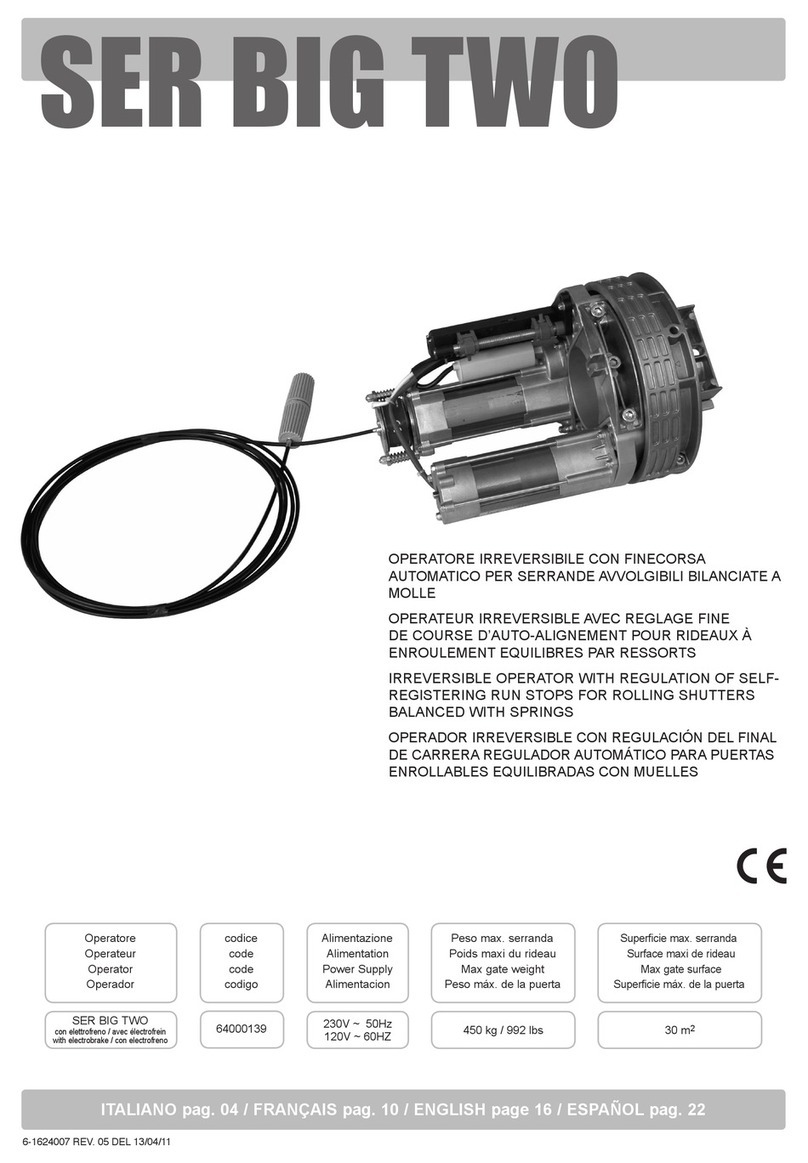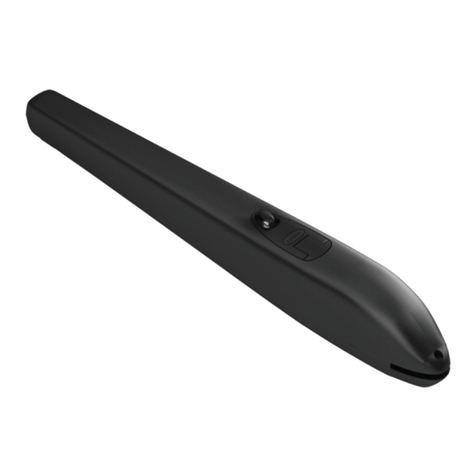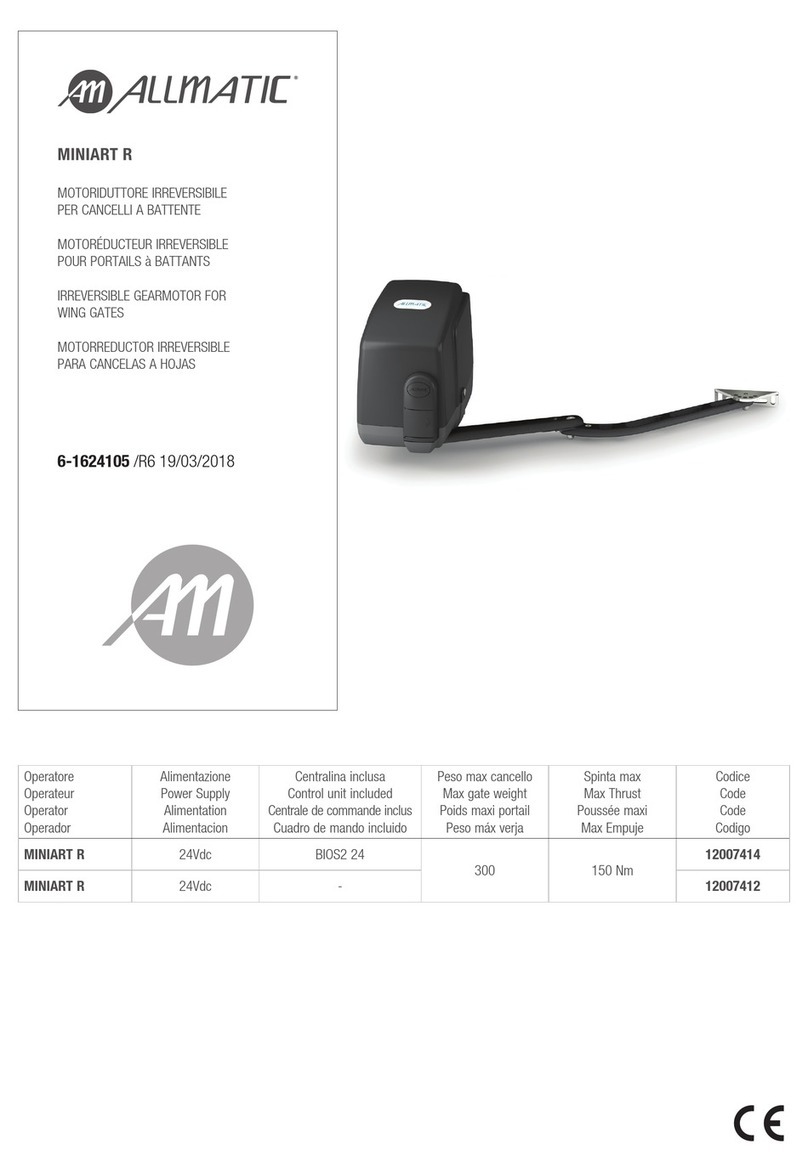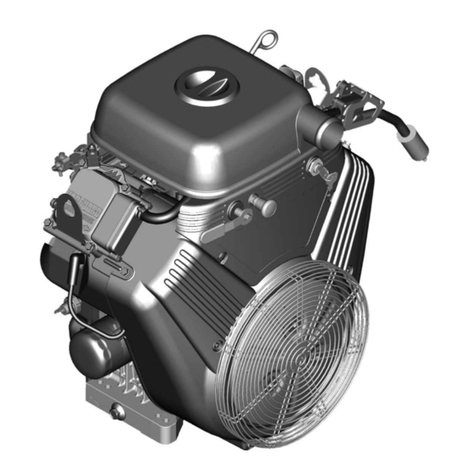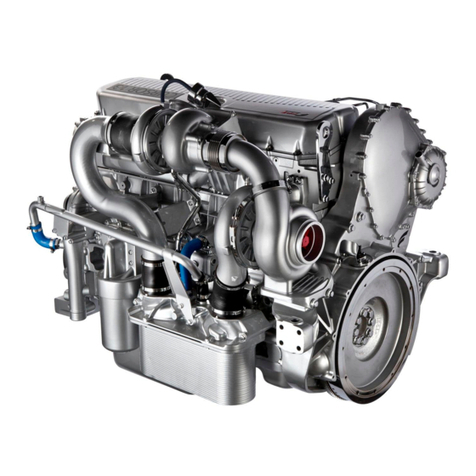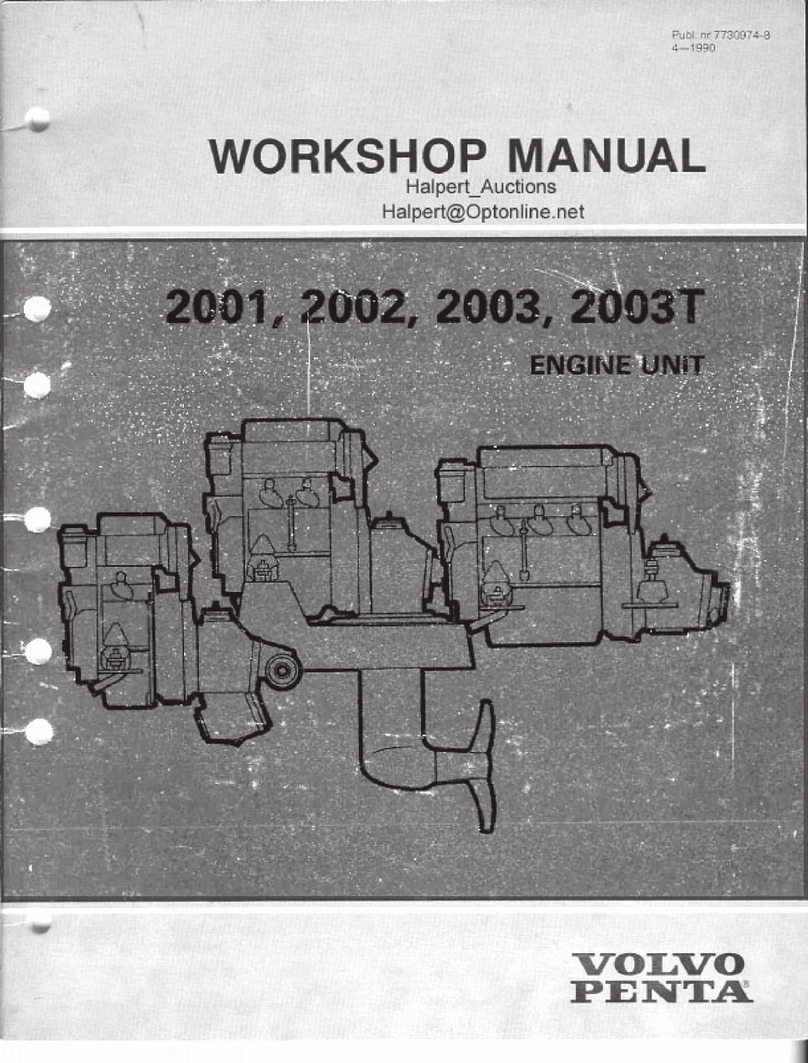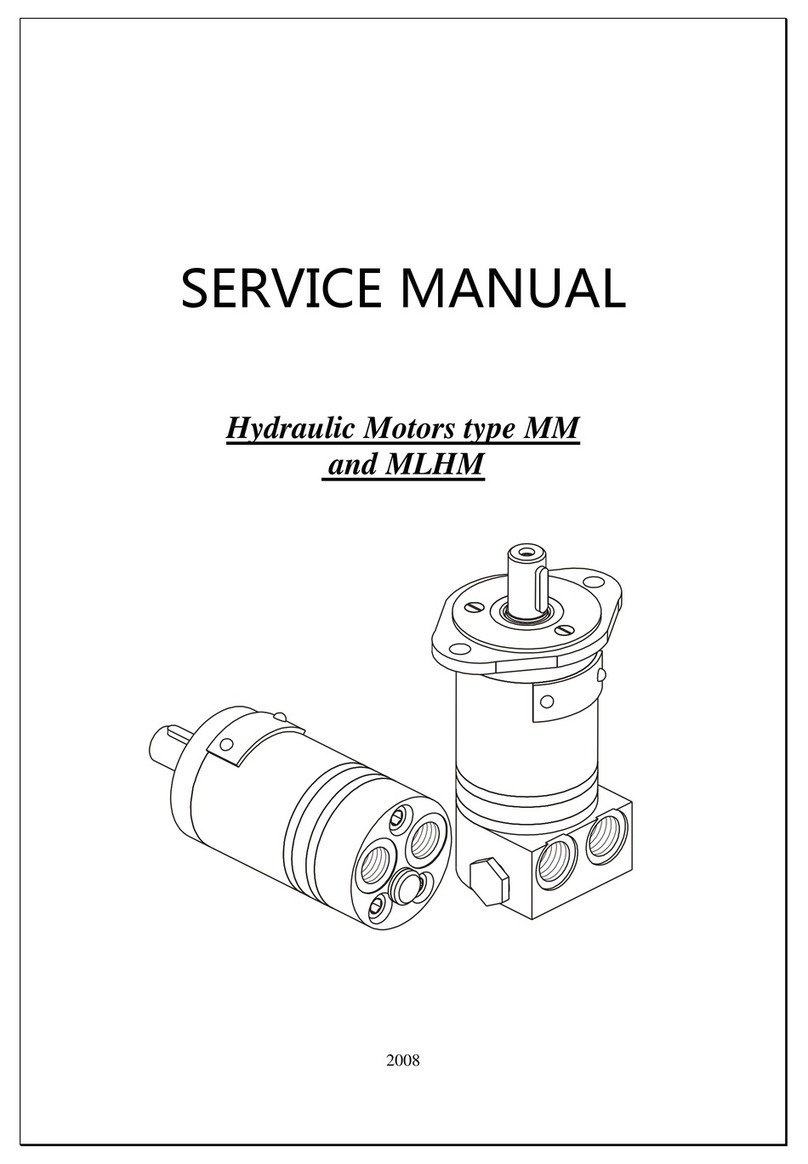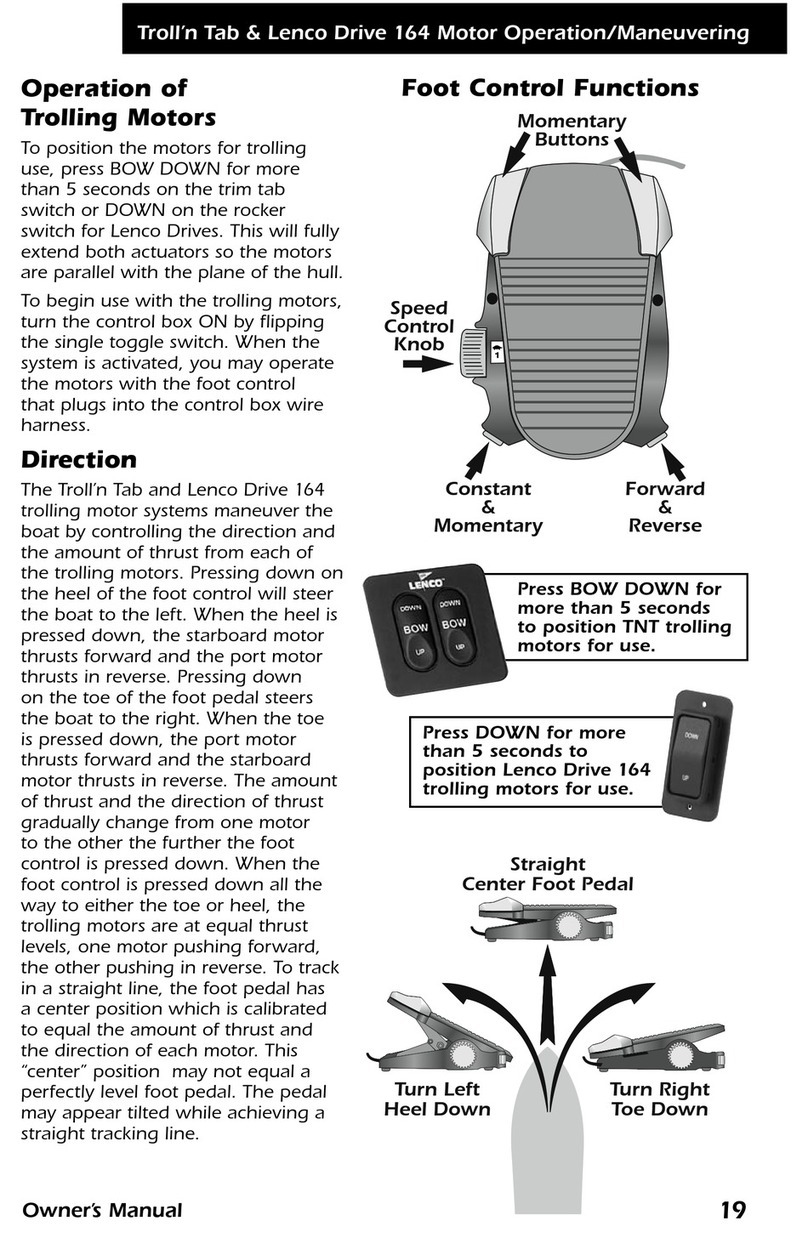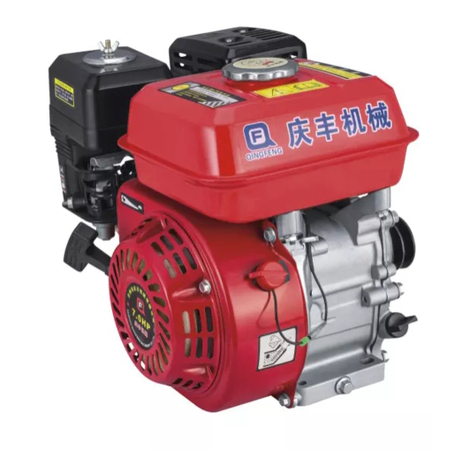Allmatic SER-UNI 170 Technical specifications

Motoriduttore per serrande
Gear motor for rolling shutters
Motorreductor para cierres enrrollables
Motorredutor para persianas
Motoréducteur pour rideaux métalliques
Getriebemotor für Rollläden
Motoreduktor do bram rolowanych
Istruzioni ed avvertenze per l’installazione e l’uso
Instructions and warnings for installation and use
Instrucciones y advertencias para su instalación y uso
Instruções e advertências para a instalação e utilização
Instructions et avertissements pour l’installation et l’usage
Anleitungen und Hinweise zu Installation und Einsatz
Instrukcje i zalecenia dotyczące instalacji i użytkowania
SER-UNI 170
230/120Vac

IT
26-1624009 rev.03
1
2
3
4
5
7
6
8
Avvertenze per la sicurezza
2.1
2.2
2.3
4.1
4.2
4.3
4.4
5.1
5.2
6.1
Introduzione al prodotto
Descrizione del prodotto
Caratteristiche tecniche
Dimensioni d’ingombro
Veriche preliminari
Installazione del prodotto
Installazione
Collegamenti elettrici
Test senso di marcia
Regolazione del ne corsa della salita
Collaudo e messa in servizio
Collaudo
Messa in servizio
Istruzioni ed avvertenze destinate
all’utilizzatore nale
Approfondimenti
Installazione coppia di motoriduttori
Dichiarazione CE di conformità
pag. 3
pag. 4
pag. 4
pag. 4
pag. 4
pag. 5
pag. 5
pag. 5
pag. 6
pag. 6
pag. 6
pag. 7
pag. 7
pag. 7
pag. 8
pag. 7
pag. 35
INDICE

IT
3
6-1624009 rev.03
1 - AVVERTENZE PER LA SICUREZZA
ATTENZIONE – per la sicurezza delle persone è im-
portante rispettare queste istruzioni e conservarle
per utilizzi futuri.
Leggere attentamente le istruzioni prima di eseguire l’installazione.
La progettazione e la fabbricazione dei dispositivi che
compongono il prodotto e le informazioni contenute
nel presente manuale rispettano le normative vigenti
sulla sicurezza. Ciò nonostante un’installazione e una
programmazione errata possono causare gravi ferite
alle persone che eseguono il lavoro e a quelle che
useranno l’impianto. Per questo motivo, durante l’in-
stallazione, è importante seguire attentamente tutte le
istruzioni riportate in questo manuale.
Non procedere con l’installazione se si hanno dubbi di qualunque
natura e richiedere eventuali chiarimenti al Servizio Assistenza
Allmatic.
Per la legislazione Europea la realizzazione di una
porta o un cancello automatico deve rispettare le nor-
me previste dalla Direttiva 2006/42/CE (Direttiva Mac-
chine) e in particolare, le norme EN 12445; EN 12453;
EN 12635 e EN 13241-1, che consentono di dichiarare
la conformità dell’automazione.
In considerazione di ciò, il collegamento denitivo dell’automatismo
alla rete elettrica, il collaudo dell’impianto, la sua messa in servizio
e la manutenzione periodica devono essere eseguiti da personale
qualicato ed esperto, rispettando le istruzioni riportate nel riquadro
“Collaudo e messa in servizio dell’automazione”.
Inoltre, egli dovrà farsi carico di stabilire anche le prove previste in
funzione dei rischi presenti e dovrà vericare il rispetto di quanto
previsto da leggi, normative e regolamenti: in particolare, il rispetto
di tutti i requisiti della norma EN 12445 che stabilisce i metodi di
prova per la verica degli automatismi per porte e cancelli.
ATTENZIONE - Prima di iniziare l’installazione, effet-
tuare le seguenti analisi e veriche:
Vericare che i singoli dispositivi destinati all’automazione siano
adatti all’impianto da realizzare. Al riguardo, controllare con partico-
lare attenzione i dati riportati nel capitolo “Caratteristiche tecniche”.
Non effettuare l’installazione se anche uno solo di questi dispositivi
non è adatto all’uso.
Vericare se i dispositivi presenti nel kit sono sufcienti a garantire
la sicurezza dell’impianto e la sua funzionalità.
Eseguire l’analisi dei rischi che deve comprendere anche l’elenco
dei requisiti essenziali di sicurezza riportati nell’ Allegato I della Di-
rettiva Macchine, indicando le soluzioni adottate. L’analisi dei rischi
è uno dei documenti che costituiscono il fascicolo tecnico dell’au-
tomazione. Questo dev’essere compilato da un installatore profes-
sionista.
Considerando le situazioni di rischio che possono
vericarsi durante le fasi di installazione e di uso del
prodotto è necessario installare l’automazione osser-
vando le seguenti avvertenze:
Non eseguire modiche su nessuna parte dell’automatismo se non
quelle previste nel presente manuale. Operazioni di questo tipo
possono solo causare malfunzionamenti. Il costruttore declina ogni
responsabilità per danni derivanti da prodotti modicati arbitraria-
mente;
Evitare che le parti dei componenti dell’automazione possano veni-
re immerse in acqua o in altre sostanze liquide. Durante l'installazio-
ne evitare che i liquidi possano penetrare all'interno dei dispositivi
presenti;
Se sostanze liquide penetrano all’interno delle parti dei componenti
dell’automazione, scollegare immediatamente l’alimentazione elet-
trica e rivolgersi al Servizio Assistenza Allmatic. L’utilizzo dell’auto-
mazione in tali condizioni può causare situazioni di pericolo;
Non mettere i vari componenti dell’automazione vicino a fonti di ca-
lore né esporli a amme libere. Tali azioni possono danneggiarli ed
essere causa di malfunzionamenti, incendio o situazioni di pericolo;
Tutte le operazioni che richiedono l’apertura del guscio di protezio-
ne dei vari componenti dell’automazione, devono avvenire con la
centrale scollegata dall’alimentazione elettrica. Se il dispositivo di
sconnessione non è a vista, apporre un cartello con la seguente
dicitura: “MANUTENZIONE IN CORSO”;
La Centrale deve essere collegata ad una linea di alimentazione
elettrica dotata di messa a terra di sicurezza;
Il prodotto non può essere considerato un efcace sistema di prote-
zione contro l’intrusione. Se desiderate proteggervi efcacemente,
è necessario integrare l’automazione con altri dispositivi;
Il prodotto può essere utilizzato esclusivamente dopo che è stata
effettuata la “messa in servizio” dell’automazione, come previsto nel
paragrafo “Collaudo e messa in servizio dell’automazione”;
Prevedere nella rete di alimentazione dell'impianto un dispositivo di
disconnessione con una distanza di apertura dei contatti che con-
senta la disconnessione completa nelle condizioni dettate dalla ca-
tegoria di sovratensione III;
Per la connessione di tubi rigidi e essibili o passacavi utilizzare
raccordi conformi al grado di protezione IP55 o superiore;
L’impianto elettrico a monte dell’automazione deve rispondere alle
vigenti normative ed essere eseguito a regola d’arte;
Si consiglia di utilizzare un pulsante di emergenza da installare nei
pressi dell’automazione (collegato all’ingresso STOP della scheda
di comando) in modo che sia possibile l’arresto immediato del can-
cello o della porta in caso di pericolo;
Questo dispositivo non è destinato a essere usato da persone
(bambini compresi) le cui capacità siche, sensoriali o mentali si-
ano ridotte, oppure con mancanza di esperienza o di conoscenza,
a meno che esse abbiano potuto beneciare, attraverso l’interme-
diazione di una persona responsabile della loro sicurezza, di una
sorveglianza o di istruzioni riguardanti l’uso del dispositivo.
I bambini devono essere sorvegliati per sincerarsi che non giochino
con l’apparecchio.
ATTENZIONE - Il materiale d’imballaggio di tutti i
componenti dell’automazione deve essere smaltito
nel pieno rispetto della normativa presente a livello
locale.
ATTENZIONE - I dati e le informazioni indicate in que-
sto manuale sono da ritenersi suscettibili di modica
in qualsiasi momento e senza obbligo di preavviso da
parte di Allmatic S.r.l.

IT
46-1624009 rev.03
2 - INTRODUZIONE AL PRODOTTO
Fig. 1
2.3 - Dimensioni d’ingombro
2.1 - Descrizione del prodotto
I motoriduttori SER-UNI170 sono destinati all’installazione in impian-
ti per il sollevamento di serrande.
I motoriduttori SER-UNI170 sono progettati e costruiti per il mon-
taggio su serrande avvolgibili munite di sistema di bilanciamento
(cestelli porta molle) nei limiti di peso riportati nella tabella delle
speciche tecniche.
E’ vietato l’utilizzo dei motoriduttori per applicazioni differenti da
quelle sopra indicate.
2.2 - Caratteristiche tecniche
350
325
658 250
200
60
R110
Codice Descrizione
64000670 Monomotore tubo 60 corona 200 170kg 230V irreversibile (con elettrofreno)
64000675 Monomotore tubo 60 corona 200 170kg 120V irreversibile (con elettrofreno)
64000671 Monomotore tubo 60 corona 200 170kg 230V reversibile (senza elettrofreno)
64000676 Monomotore tubo 60 corona 200 170kg 120V reversibile (senza elettrofreno)
DATI TECNICI
Modello 64000670 64000675 64000671 64000676
Alimentazione 230 Vac 120 Vac 230 Vac 120 Vac
Potenza motore 600 W 600 W 600 W 600 W
Assorbimento 2,8 A 5 A 2,8 A 5 A
Coppia Nm 175 Nm 175 Nm 175 Nm 175 Nm
Velocità di tamburo 10 rpm 10 rpm 10 rpm 10 rpm
Temperatura di esercizio -20° + 55°C -20° + 55°C -20° + 55°C -20° + 55°C
Corsa max. serranda 6 m 6 m 6 m 6 m
Termica min 7’ 5’ 7’ 5’
Condensatore 20 µF 75 µF 20 µF 75 µF
Peso 9-10 Kg 9-10 Kg 9-10 Kg 9-10 Kg

5
IT
6-1624009 rev.03
3 - VERIFICHE PRELIMINARI
4 - INSTALLAZIONE DEL PRODOTTO
Prima di installare il prodotto vericare e controllare i seguenti punti:
- Controllare che il cancello o la porta siano adatti ad essere auto-
matizzati
- Il peso e la dimensione del cancello o della porta devono rientrare
nei limiti d’impiego specicati per l’automazione su cui viene instal-
lato il prodotto.
- Controllare la presenza e la solidità degli arresti meccanici di sicu-
rezza del cancello o della porta
- Vericare che la zona di ssaggio del prodotto non sia soggetta
ad allagamenti
- Condizioni di elevata acidità o salinità o la vicinanza a fonti di calo-
re potrebbero causare malfunzionamenti del prodotto
- In caso di condizioni climatiche estreme (per esempio in presenza
di neve, ghiaccio, elevata escursione termica, temperature eleva-
te) gli attriti potrebbero aumentare e quindi la forza necessaria per
la movimentazione e lo spunto iniziale potrebbe essere superiori a
quella necessaria in condizioni normali.
- Controllare che la movimentazione manuale del cancello o della
porta sia uida e priva di zone di maggiore attrito o vi sia rischio di
deragliamento dello stesso
- Controllare che il cancello o la porta siano in equilibrio e rimanga-
no quindi fermi se lasciati in qualsiasi posizione
- Vericare che la linea elettrica a cui sarà collegato il prodotto sia
provvista di opportuna messa a terra di sicurezza e protetta da un
dispositivo magnetotermico e differenziale
- Prevedere nella rete di alimentazione dell'impianto un dispositi-
vo di disconnessione con una distanza di apertura dei contatti che
consenta la disconnessione completa nelle condizioni dettate dalla
categoria di sovratensione III.
- Vericare che tutto il materiale utilizzato per l’installazione sia con-
forme alle normative vigenti
Fig. 2
4.1 - Installazione
Eseguire due fori nel tubo portante (vedi Fig. 2), uno da 10,5 mm
(Fig. 2 Rif.1) per l’inserimento della vite antirotazione e l’altro da 12,5
mm (Fig. 2 Rif.2) per il passaggio del cavo elettrico di alimentazione,
posizionando se possibile, il motoriduttore in posizione centrale con
la scatola del gruppo ne corsa posta in posizione comoda sia per
effettuare la manovra di distacco e riapplicazione del carter, sia quel-
la di regolazione dei ne corsa.
Se il motoriduttore è dotato di elettrofreno eseguire un ulteriore foro
da 10 mm (Fig. 2 Rif.3) per permettere il passaggio del cavo di sbloc-
co manuale.
Separare in due la pulegge svitando con chiave esagonale da mm
6 le viti M8x25.
Togliere il cuscinetto a rullini e posarlo su un posto pulito (non piegar-
lo mai nel senso contrario).
Separare i due componenti del supporto motore svitando le viti
M8x25 operando con chiave esagonale da mm. 6 e riaccoppiarli
operando in maniera inversa rispetto alla precedente operazione (
se il tubo non è di diametro 60 mm utilizzare gli adattatori da 48 mm).
Avvitare completamente la vite M10x50 (vedi Fig. 5 Rif. E) utilizzan-
do chiave da 17.
Reinserire il cuscinetto con rullini nella sede rispettando il suo senso
di avvolgimento.
Inserire la puleggia nella sede accoppiando le due metà e serrando
bene le due viti M8x25.
Avvitare l’altra vite M10x50 ( vedi Fig. 5 Rif. A) no a esercitare pres-
sione sul tubo e bloccarla in posizione avvitando il dado con chiave da
17 mm. ( per un montaggio corretto il motoriduttore dovrà risultare ben
sso e la puleggia ruotare liberamente ).
Effettuare un foro da 12 mm sull’ultimo elemento della serranda in
corrispondenza del foro M10 posizionato sulla supercie della pu-
leggia (vedi Fig. 2 Rif.4). Se la serranda è composta da elementi
ondulati o irregolari si consiglia di inserire un elemento standard pia-
no di lunghezza circa 1 metro per evitare danni derivanti da contratti
anomali della serranda con il motoriduttore.
Fissare la serranda alla puleggia utilizzando la rondella e vite
M10x25 in dotazione, (vedi Fig. 5 Rif. D).
Nel caso in cui il cestello portamolla e la puleggia dello Sharp non si-
ano dello stesso diametro applicare sulla puleggia lo specico adat-
tatore per 220 mm posto a corredo negli accessori.
Inserire il cavo di alimentazione nel foro da mm 12,5 (Fig. 2 Rif.2)
introducendolo nel tubo di sostegno ed effettuare le connessioni
elettriche.( vedere istruzioni ).
Se il motoriduttore è dotato di elettrofreno (vedi Fig. 5 Rif. F), in-
trodurre nel foro da 10 mm (Fig. 2 Rif.3) il cavo di sblocco manua-
le (vedi Fig. 5 Rif. G). Per il perfetto funzionamento dello sblocco
manuale evitare nel modo più assoluto di creare pieghe al cavo e
di fargli eseguire curve molto strette nel suo percorso verso terra
dopo il tubo.
Rif.1
Rif.2
Rif.3
Rif.4
Vista dall’alto

6
IT
6-1624009 rev.03
Per posizionare il necorsa di chiusura (vedi Fig. 5 Rif. I) operare
nel modo seguente:
Sbloccare il registro tirando leggermente il piolino laterale (vedi Fig.
5b).
Una volta liberato il registro, ruotare lo stesso verso il microinter-
ruttore no a che non si senta il click di apertura dei contatti del
microswitch (vedi Fig. 5 Rif. C).
Ribloccare il registro premendo i due semigusci uno contro l’altro
(vedi Fig. 5c). Vericare che il registro non possa ruotare!
Dare tensione e se il motore non attua il collegamento è corretto,
In caso contrario disconnettere l’alimentazione ed invertire i cavi
collegati ai morsetti o i due cavi diretti al motore.
Non si deve mai modicare la posizione del comune.
Una volta opportunamente regolato il necorsa di chiusura e veri-
cato il senso di marcia, si va a posizionare il necorsa di apertura
effettuando il suo spostamento agendo di nuovo sul piolino laterale
(vedi Fig. 5b); ruotare il registro verso il rispettivo microinterruttore
posizionandolo in sua prossimità, quindi ribloccare il registro premen-
do i due semigusci uno contro l’altro (vedi Fig. 5c). Vericare che il
registro non possa ruotare!
Alimentare il motoriduttore e far avvolgere la serranda no a che
la stessa non si arresta. In caso di apertura non idonea riportare
la serranda in posizione di chiusura ed agire nuovamente come
descritto precedentemente avvicinando o allontanando il registro
dalla posizione ssata in precedenza.
Le righe bianche serigrafate sul circuito sono appositamente poste
per aiutare l’utente nel posizionamento del necorsa di apertura.
4.3 - Test del senso di marcia e regolazione del ne corsa di chiusura
4.4 - Regolazione del ne corsa di apertura
A
E
DG
F
B
I
H
C
OP CL
OP CL COM
M
C
OP CL COM
NF
EB EB
Fig. 3
4.2 - Connessioni elettriche
Togliere il carter di protezione dei microinterruttori
Inserire il cavo nel passacavo ed eseguire le connessioni.
E’ importante rispettare il collegamento del comune del motore
(COM) ed è indispensabile eseguire il collegamento di Terra.
Fig. 5b
Fig. 5c
Fig. 5

7
IT
6-1624009 rev.03
5.2 Messa in servizio
A seguito del positivo collaudo di tutti (e non solo di alcuni) i disposi-
tivi dell’impianto si può procedere con la messa in servizio
E’ necessario realizzare e conservare per 10 anni il fascicolo tecni-
co dell’impianto che dovrà contenere lo schema elettrico, il disegno
o foto dell’impianto, l’analisi dei rischi e le soluzioni adottate, la di-
chiarazione di conformità del fabbricante di tutti i dispositivi collega-
ti, il manuale istruzioni di ogni dispositivo e il piano di manutenzione
dell’impianto
Fissare sul cancello o la porta una targa indicante i dati dell’automa-
zione, il nome del responsabile della messa in servizio, il numero di
matricola e l’anno di costruzione, il marchio CE
Fissare una targa che indichi le operazioni necessarie per sbloccare
manualmente l’impianto
Realizzare e consegnare all’utilizzatore nale la dichiarazione di
conformità , le istruzioni e avvertenze d’uso per l’utilizzatore nale e
il piano di manutenzione dell’impianto
Accertarsi che l’utilizzatore abbia compreso il corretto funzionamen-
to automatico, manuale e di emergenza dell’automazione.
Informare anche in forma scritta l’utilizzatore nale sui pericoli e ri-
schi ancora presenti
5.1 Collaudo
Tutti i componenti dell’impianto devono essere collaudati seguendo
le procedure indicate nei rispettivi manuali di istruzioni
Controllare che siano rispettate le indicazioni del Capitolo 1 – Avver-
tenze per la sicurezza
Controllare che il cancello o la porta si possano muovere libera-
mente una volta sbloccata l’automazione e che siano in equilibrio e
rimangano quindi fermi se lasciati in qualsiasi posizione
Controllare il corretto funzionamento di tutti i dispositivi collegati (fo-
tocellule, bordi sensibili, pulsanti di emergenza, altro) effettuando
delle prove di apertura, chiusura e arresto del cancello o della porta
tramite i dispositivi di comando collegati (trasmettitori, pulsanti, se-
lettori)
Effettuare le misurazioni della forza d’impatto come previsto dalla
normativa EN12445 regolando le funzioni di velocità, forza motore e
rallentamenti della centrale nel caso in cui le misurazioni non diano
i risultati desiderati no a trovare il giusto settaggio
Il collaudo dell’impianto va eseguito da un tecnico qualicato che
deve effettuare le prove richieste dalla normativa di riferimento in
funzione dei rischi presenti, vericando il rispetto di quanto previsto
dalle normative, in particolare la norma EN12445 che indica i meto-
di di prova per gli automatismi per porte e cancelli.
5 - COLLAUDO E MESSA IN SERVIZIO DELL’AUTOMAZIONE
6 - APPROFONDIMENTI
6.1 - Installazione di coppia di motoriduttori
Posizionare i motoriduttori SER-UNI170 ( vedi Fig. 7 ) alle due estre-
mità del tubo con le pulegge contrapposte ricordando sempre di po-
sizionare i gruppi ne corsa in posizione comoda sia per togliere che
rimettere il carter nonché per eseguire le regolazioni dei ne corsa.
Per installare sul tubo i due motoriduttori procedere nello stesso
modo come per un singolo motore. ( vedi Connessioni Elettriche)
Fig. 7
Nel caso di utilizzo di una coppia di motoriduttori, il motoriduttore M1
sarà l’unico alimentato direttamente dalla rete e solo su di esso sa-
ranno eseguite le regolazioni dei ne corsa. Il motoriduttore M2 sarà
alimentato da spezzone di cavo collegato sugli stessi morsetti del
motoriduttore M1 con le sole connessioni dei due sensi di marcia in-
vertite tra loro e saranno resi inutilizzati i ne corsa e i microswitch
M2, poiché M2 non necessita di regolazione ( vedi Fig. 5 Rif. B e C ).
Le connessioni elettriche saranno effettuate nello stesso modo
come per un motore.
OP CL OP CL
OP CL COM
M1 M2
CC
OP CL COM
NF
EB EB
Fig. 6
OP CL COM
OP CL COM
EB EB
BB

IT
86-1624009 rev.03
Allmatic S.r.l. produce sistemi per l’automazione di cancelli, porte
garage, porte automatiche, serrande, barriere per parcheggi e stra-
dali. Allmatic non è però il produttore della vostra automazione, che
è invece il risultato di un’opera di analisi, valutazione, scelta dei ma-
teriali, e realizzazione dell’impianto eseguita dal vostro installatore
di ducia. Ogni automazione è unica e solo il vostro installatore pos-
siede l’esperienza e la professionalità necessarie ad eseguire un
impianto secondo le vostre esigenze, sicuro ed afdabile nel tempo,
e soprattutto a regola d’arte, rispondente cioè alle normative in vigo-
re. Anche se l’automazione in vostro possesso soddisfa il livello di
sicurezza richiesto dalle normative, questo non esclude l’esistenza
di un “rischio residuo”, cioè la possibilità che si possano generare
situazioni di pericolo, solitamente dovute ad un utilizzo incosciente
o addirittura errato, per questo motivo desideriamo darvi alcuni con-
sigli sui comportamenti da seguire :
• Prima di usare per la prima volta l’automazione, fatevi spiegare
dall’installatore l’origine dei rischi residui.
• Conservate il manuale per ogni dubbio futuro e consegnatelo ad
un eventuale nuovo proprietario dell’automazione.
• Un uso incosciente ed improprio dell’automazione può farla diven-
tare pericolosa: non comandate il movimento dell’automazione se
nel suo raggio di azione si trovano persone, animali o cose.
• Bambini: Se adeguatamente progettato un impianto di automa-
zione garantisce un alto grado di sicurezza, impedendo con i suoi
sistemi di rilevazione il movimento in presenza di persone o cose,
e garantendo un’attivazione sempre prevedibile e sicura. È comun-
que prudente vietare ai bambini di giocare in prossimità dell’auto-
mazione e per evitare attivazioni involontarie non lasciare i teleco-
mandi alla loro portata.
• Anomalie: Non appena notate qualunque comportamento anoma-
lo da parte dell’automazione, togliete alimentazione elettrica all’im-
pianto ed eseguite lo sblocco manuale. Non tentate da soli alcuna
riparazione, ma richiedete l’intervento del vostro installatore di du-
cia: nel frattempo l’impianto può funzionare come un’apertura non
automatizzata, una volta sbloccato il motoriduttore con apposita
chiave di sblocco data in dotazione con l’impianto.
• In caso di rotture o assenza di alimentazione: Attendendo l’inter-
vento del vostro installatore, o il ritorno dell’energia elettrica se l’im-
pianto non è dotato di batterie tampone, l’automazione può essere
azionata come una qualunque apertura non automatizzata. Per fare
ciò è necessario eseguire lo sblocco manuale.
• Sblocco e movimento manuale: prima di eseguire questa opera-
zione porre attenzione che lo sblocco può avvenire solo quando
l’anta è ferma.
• Manutenzione: Come ogni macchinario la vostra automazione ha
bisogno di una manutenzione periodica afnché possa funzionare
più a lungo possibile ed in completa sicurezza. Concordate con il vo-
stro installatore un piano di manutenzione con frequenza periodica;
Allmatic consiglia un intervento ogni 6 mesi per un normale utilizzo
domestico, ma questo periodo può variare in funzione dell’intensità
d’uso. Qualunque intervento di controllo, manutenzione o riparazio-
ne deve essere eseguito solo da personale qualicato.
• Non modicate l’impianto ed i parametri di programmazione e di
regolazione dell’automazione: la responsabilità è del vostro instal-
latore.
• Il collaudo, le manutenzioni periodiche e le eventuali riparazioni
devono essere documentate da chi le esegue e i documenti conser-
vati dal proprietario dell’impianto.
Gli unici interventi che vi sono possibili e vi consigliamo di effettua-
re periodicamente sono la pulizia dei vetrini delle fotocellule e la
rimozione di eventuali foglie o sassi che potrebbero ostacolare l’au-
tomatismo. Per impedire che qualcuno possa azionare il cancello o
la porta, prima di procedere, ricordatevi di sbloccare l’automatismo
e di utilizzare per la pulizia solamente un panno leggermente inu-
midito con acqua.
• Smaltimento: Al termine della vita dell’automazione, assicuratevi
che lo smaltimento sia eseguito da personale qualicato e che i
materiali vengano riciclati o smaltiti secondo le norme valide a livello
locale.
• Azionare il comando del cancello o della porta (con telecomando,
con selettore a chiave, ecc.); se tutto è a posto il cancello o la porta
si aprirà o chiuderà normalmente, altrimenti il lampeggiante farà al-
cuni lampeggi e la manovra non partirà.
Con le sicurezze fuori uso è necessario far riparare quanto prima
l’automatismo.
Sostituzione pila del telecomando: se il vostro trasmettitore dopo
qualche tempo vi sembra funzionare peggio, oppure non funzionare
affatto, potrebbe semplicemente dipendere dall’esaurimento della
pila (a seconda dell’uso, possono trascorrere da diversi mesi no ad
oltre un anno). Ve ne potete accorgere dal fatto che la spia di con-
ferma della trasmissione non si accende, oppure si accende solo
per un breve istante.
Le pile contengono sostanze inquinanti: non gettarle nei riuti co-
muni ma utilizzare i metodi previsti dai regolamenti locali.
Vi ringraziamo per aver scelto Allmatic e vi invitiamo a visitare il no-
stro sito internet www.allmatic.com per ulteriori informazioni.
7 - ISTRUZIONI ED AVVERTENZE DESTINATE ALL’UTILIZZATORE FINALE

IT
9
6-1624009 rev.03
NOTE

10
EN
6-1624009 rev.03
1
2
3
4
5
7
6
8
Safety warnings
2.1
2.2
2.3
4.1
4.2
4.3
4.4
5.1
5.2
6.1
Product overview
Description of the product
Technical characteristics
Overall dimensions
Preliminary checks
Installing the product
Installation
Electrical connections
Direction test and adjustment of the closing limit switch
Adjusting the opening limit switch
Testing and commissioning
Testing
Commissioning
Instructions and warnings for the end user
Insights
Installing a pair of gear motors
EC Declaration of Conformity
p. 11
p. 12
p. 12
p. 12
p. 12
p. 13
p. 13
p. 13
p. 14
p. 14
p. 14
p. 15
p. 15
p. 15
p. 16
p. 15
p. 35
INDEX

11
EN
6-1624009 rev.03
WARNING - for the safety of people, it is important
to follow these instructions and save them for future
use.
Read the instructions carefully before you start the installation.
The design and manufacture of the devices making
up the product and the information contained in this
manual comply with safety regulations. However,
wrong installation and programming may cause seri-
ous physical injury to those who perform the work
and those who will use the device. For this reason,
during installation, it is important to carefully follow
all instructions in this manual.
Do not proceed with the installation if you have doubts of any kind
and contact Allmatic Customer Service for clarications.
By the European legislation, the creation of the auto-
mation of a door or gate must comply with the rules
laid down in Directive 2006/42/EC (Machinery Direc-
tive) and in particular, EN 12445; EN 12453; EN 12635
and EN 13241-1 standards, which allow the installer
to declare the compliance of the automation.
In view of this, the nal connections to the power supply of the auto-
mation, the system tests, its commissioning and maintenance must
be performed by qualied and experienced personnel, according to
the instructions in "Testing and commissioning of the automation".
Moreover, the personnel shall also take responsibility to establish
the tests related to the risks involved and verify compliance with
the provisions of laws, rules and regulations: in particular, compli-
ance with all requirements of standard EN 12445, which establishes
methods of tests for the verication of the automations for doors
and gates.
IMPORTANT - Before starting the installation, perform
the following analysis and tests:
- Ensure that the individual automation devices are suitable for the
installation to be made. In this regard, check with particular attention
the data contained in the "Technical data" section. Do not install if
even one of the devices is not suitable for use.
- Check whether the devices in the kit are sufcient to maintain
safety and functionality.
- Perform risk analysis, which must also include the list of essential
safety requirements set out in Annex I of the Machinery Directive,
indicating the solutions adopted. Risk analysis is one of the docu-
ments comprising the technical le of the automation. This must be
completed by a professional installer.
Considering the hazards that may occur during in-
stallation and use of the product you need to install
the automation observing the following precautions:
- Do not make changes to any part of the automation, other than
those specied in this manual. Operations of this type will only lead
to malfunction. The manufacturer disclaims any liability for damage
arising from products modied arbitrarily.
- Keep the parts of the components from being immersed in water or
other liquids. During the installation, ensure that no liquid penetrates
into the devices.
- If liquid spills into any part of the automation components, imme-
diately disconnect the power supply and contact the Allmatic Cus-
tomer Service. The use of the automation under these conditions
can be dangerous.
- Do not place the various components near sources of heat and do
not expose them to open ame. These actions may damage them
and cause malfunctions, re or danger.
- All operations requiring the opening of the protective cover of vari-
ous automation components, must be performed with the control
unit disconnected from the main supply. If the disconnection device
is not visible, place a "MAINTENANCE IN PROGRESS" sign.
- The control unit must be connected to a power supply line provided
with grounding safety connection.
- The product cannot be considered an effective system of protec-
tion against intrusion. If you want to protect yourself efciently, you
need to integrate the automation with other devices.
- The product can be used only after the "commissioning" of au-
tomation has been made, as provided in paragraph "Testing and
commissioning of the automation"
- Provide the power system with a disconnecting device with a gap
between contacts enabling full disconnection, under the conditions
dictated by the overvoltage category III
- For the connection of pipes and conduit or guides, use pipettings
with IP55 degree of protection or higher.
- The electric system upstream of the automation shall comply with
current regulations and must be made according to the good indus-
try practice.
- It is recommended to use an emergency button to be installed near
the automation (connected to the STOP input of the control board)
so that you can immediately stop the gate or door in case of danger.
This device is not intended for use by persons (including children)
whose physical, sensory or mental abilities are reduced, or who
have lack of experience or knowledge, unless they have been able
to benet, through the intermediary of a person responsible for their
safety, from supervision or instruction concerning use of the device.
Children should be supervised to make sure they do not play with
the device;
WARNING - The packaging material of all compo-
nents must be disposed in compliance with local
regulations.
WARNING - The data and information provided in this
manual are subject to change at any time without no-
tice by Allmatic S.r.l.
1 - SAFETY WARNINGS

12
EN
6-1624009 rev.03
2 - PRODUCT OVERVIEW
Fig. 1
2.3 - Overall dimensions
2.1 - Description of the product
The SER-UNI170 gear motors are destined to be installed in sys-
tems for raising rolling shutters.
The SER-UNI170 gear motors have been designed and constructed
to be tted onto rolling shutters which are equipped with a balancing
system (spring box holders) within the weight limits indicated in the
technical specications table.
The use of gear motors for applications which differ from those
indicated above is prohibited.
2.2 - Technical characteristics
Code Description
64000670 Single Engine tube 60 pulley 200 170 kg 230V irreversible (with electrobrake)
64000675 Single Engine tube 60 pulley 200 170 kg 120V irreversible (with electrobrake)
64000671 Single Engine tube 60 pulley 200 170 kg 230V reversible (without electrobrake)
64000676 Single Engine tube 60 pulley 200 170 kg 120V reversible (without electrobrake)
TECHNICAL DATA
Model 64000670 64000675 64000671 64000676
Power supply 230 Vac 120 Vac 230 Vac 120 Vac
Engine power 600 W 600 W 600 W 600 W
Absorption 2,8 A 5 A 2,8 A 5 A
Nm torque 175 Nm 175 Nm 175 Nm 175 Nm
Drum speed 10 rpm 10 rpm 10 rpm 10 rpm
Operating temperature -20° + 55°C -20° + 55°C -20° + 55°C -20° + 55°C
Max. stroke roller shutter 6 m 6 m 6 m 6 m
Min condenser 7’ 5’ 7’ 5’
Thermal 20 µF 75 µF 20 µF 75 µF
Weight 9-10 Kg 9-10 Kg 9-10 Kg 9-10 Kg
350
325
658 250
200
60
R110

13
EN
6-1624009 rev.03
Fig. 2
Ref.1
Ref.2
Ref.3
4.1 - Installation
Make two holes in the load-bearing tube (please see Fig. 2), one
of which should be 10.5 mm wide (Fig. 2 Ref.1), to insert the anti-
rotation screw into (please see Fig. 3) and the other 12.5 mm wide
(Fig. 2 Ref.2), to run the electrical cable through, positioning, if pos-
sible, the gear motor centrally with the end stroke group box located
where it can be easily reached both for carrying out the manoeuvre of
removing and replacing the chain guard, as well as for end of stroke
adjustments.
If the gear motor is equipped with an electric brake, drill another hole,
10 mm wide (Fig. 2 Ref.3) , to run the manual release cable through.
Separate the pulley into two pieces by unscrewing the M8x25 screws
with a 6 mm hexagonal screwdriver.
Remove the needle roller bearing and place it in a clean place (never
bend it contrariwise).
Separate the two components of the motor mount by loosening the
screws M8x25 working with a mm. 6 hexagonal tool and couple them
again working in reverse from the previous operation (if the tube is
not 60 mm in diameter, use the 48 mm adapters).
Screw the M10x50 screw down completely (please see Fig. 5 Ref. E)
using a 17mm split wrench.
Replace the needle roller bearing in its housing bearing in mind the
correct winding direction.
Insert the pulley into its housing by putting its two halves together and
tightening the two screws M8x25 well.
Tighten the other M10x50 screws (please see Fig. 5 Ref. A) until pres-
sure is made on the tube and block it in place by tightening the nut
with the 17 mm split wrench. (in order to be correctly assembled, the
gear motor must be well attached and the pulley must rotate freely).
Make a 12 mm hole in the last element of the rolling shutter near the
M10 hole with which is located under the external perimetric belt of
the pulley (see Fig. 2 Ref. 4). If the rolling shutter is made up of wave-
form or irregular elements, inserting a standard at element of around
1 metre is advised to avoid damage deriving from abnormal contact
between the rolling shutter and the gear motor.
Attach the pulley to the shutter using the washer and M10x25 screw
supplied (see Fig. 5 Ref D).
If the spring-holder basket and the pulley of the Sharp are not of the
same diameter, apply the specic adapter for 220 mm supplied in the
accessories on the pulley.
Plug the power cord into the mm 12.5 hole (Fig. 2 Ref. 2) by introduc-
ing it into the support tube and connect the wires. ( see instructions ).
If the motor is equipped with electric brakes (see Fig. 5 Ref F), in-
troduce the manual release cable (see Figure 5 Ref G) into the 10
mm hole (Fig. 2 Ref.3). For proper operation of the manual release,
avoid, in any way, to create folds to the cable or let it perform sharp
bends on its way to the ground after the tube.
3 - PRELIMINARY CHECKS
Before installing this product, verify and check the following steps:
- Check that the gate or door are suitable for automation
- The weight and size of the gate or door must be within the operat-
ing limits specied for the automation where the product is installed
- Check the presence and strength of the security mechanical stops
of the gate or door
- Check that the mounting area of the product is not subject to ooding
- Conditions of high acidity or salinity or proximity to heat sources
could cause malfunction of the product
- Extreme weather conditions (for example the presence of snow,
ice, high temperature range, high temperatures) may increase the
friction and therefore the force required for the handling and initial
peak may be higher than under normal conditions.
- Check that the manual operation of gate or door is smooth and
friction-free and there is no risk of derailment
- Check that the gate or door are balanced and stationary if left in
any position
- Check that the power line to supply the product is equipped with
proper grounding safety and protected by a magnetothermal and
differential security device
- Provide the power system with a disconnecting device with a gap
beween contacts enabling full disconnection under the conditions
dictated by the overvoltage category III.
- Ensure that all materials used for the installation comply with cur-
rent regulations
4 - PRODUCT INSTALLATION
Ref.4
View from above

EN
14 6-1624009 rev.03
4.2 - Electrical connections
Remove the protective chain guard from the micro switches
Insert the cable into the cable conduit and carry out the connections.
It is important to respect the motor common wire (COM) and it is
fundamental to carry out the ground link.
To position the closing limit switch (see Figure 5 Ref I), proceed as
follows:
Release the regulator by pulling gently on the pin at the side (see Fig.
5b).
Once freed the regulator, turn it towards the micro-switch until you
hear the opening click of the micro-switch contacts (see Fig 5 Ref C).
4.3 - Direction test and adjustment of the closing limit switch
Lock the regulator again by pressing the two halves together (see
Fig. 5c). Check that the regulator will not turn!
Switch the machine on and if the motor does not turn over the con-
nection is correct, otherwise disconnect the supply and invert the
cables connected to the terminals or the two cables connected to
the motor.
The position of the common wire must never be changed.
4.4 - Adjusting the opening limit switch
Once the closing limit switch has been set correctly and its operat-
ing direction has been checked, the opening limit switch must be
positioned correctly. To adjust it, pull the pin at the side as before
(see Fig. 5b) then turn the regulator towards its microswitch, setting
them close together. Lock the regulator in place by pressing the two
halves together (see Fig. 5c). Check that the regulator will not turn!
Power the motor and let the shutter roll up until it stops. In case of
unsuitable opening, return the shutter in the closed position and act
again as previously described, approaching or moving away the
regulator from the position previously laid down.
The white lines silkscreened on the circuit are specially placed to
assist the user in positioning the opening limit switch.
OP CL
OP CL COM
M
C
OP CL COM
NF
EB EB
Fig. 3
Fig. 5
A
E
DG
F
B
I
H
C
Fig. 5b
Fig. 5c

15
EN
6-1624009 rev.03
5.2 Commissioning
Following the successful testing of all (and not just some) devices in
the installation you can proceed with the commissioning
You must prepare, and keep for 10 years, the technical le of the
installation with the wiring diagram, drawing or photo of the installa-
tion, risks analysis and solutions adopted, manufacturer declaration
of conformity of all devices connected, instruction manual of each
device and maintenance schedule of the installation
Fix on the gate or door a plaque indicating the automation data, the
name of the person responsible for the commissioning, the serial
number and year of construction, the CE mark
Attach a plaque indicating the steps required to manually unlock
the motor
Implement and deliver to the end user the declaration of conform-
ity, the instructions and warnings for use for the end user and the
maintenance schedule of the installation
Make sure the user understands properly the automatic, manual
and emergency operation of the automation.
Inform the end user in writing of the dangers and risks still present
5 - TESTING AND COMMISSIONING THE AUTOMATION
5.1 Testing
All installation components must be tested following the procedures
outlined in the respective instruction manuals
Check that they meet the guidelines in Chapter 1 - Safety warnings
Check that the gate or door can move freely once the automation
is unlocked, and that they are balanced and stationary if left in any
position
Check the correct operation of all connected devices (photocells,
sensitive edges, emergency buttons, etc.), testing the opening,
closing and stopping of the gate or door via the connected control
devices (transmitters, buttons, switches)
Carry out measurements of the impact force, as prescribed by
standard EN12445 adjusting the functions of speed, motor force
and deceleration of the unit if the measurements do not give the
desired results until you nd the right setting
The testing of the automation must be performed by qualied tech-
nicians who must perform the tests required by relevant legisla-
tion related to risks, ensuring compliance with the provisions of the
regulations, in particular the EN12445 standard, which species the
testing methods for the automation of doors and gates.
6.1 - Installing a pair of gear motors.
Position the SER-UNI170 gear motors (please see Fig. 7) at either
end of the tube with the opposing pulleys, remembering to position
the end of stroke groups where they can be easily reached both for
removing and replacing the chain guard as well as for carrying out
end of stroke adjustments. To install the two gear motors on the tube
proceed in the same way as for one. (please see electrical connec-
tions)
When using two gear motors, the M1 gear motor will be the only
one which is directly supplied from the mains and it should be the
only one which undergoes end of stroke adjustments. The gear mo-
tor M2 will be powered by a piece of cable connected on the same
terminals of the M1 gear motor, with only the connections of the two
directions reversed, and the limit switches and M2 micro-switches
will be rendered unusable, because M2 does not need adjustment
(see Fig 5 Ref. B and C).
The electrical connections will be carried out in the same way as
for the motor.
6 - INSIGHT
Fig. 7
OP CL OP CL
OP CL COM
M1 M2
CC
OP CL COM
NF
EB EB
Fig. 6
OP CL COM
OP CL COM
EB EB
BB

16
EN
6-1624009 rev.03
Allmatic S.r.l. produces systems for the automation of gates, garage
doors, automatic doors, rolling doors, parking lots and road barriers.
However, Allmatic is not the manufacturer of your automation, which
is rather the result of a process of analysis, evaluation, selection
of materials, and installation performed by your own installer. Each
automation is unique and only your installer has the experience and
professionalism required to create an installation to suit your needs,
safe and reliable over time, and carried out according to the good
industry practice, i.e. compliant with the current regulations. Even if
your automation meets the security level required by law, this does
not exclude the existence of "residual risks", i.e. the possibility that
it may cause dangerous situations, usually as a result of improper
or irresponsible use; for this reason we would like to give you some
suggestions:
Before using the automation for the rst time, ask the installer to
explain the origin of residual risks.
Keep this manual for future use and deliver it to any new owner of
the automation.
Inappropriate or improper use of the automation can make it dan-
gerous: do not command the movement of the automation if people,
animals or things are in its range.
Children: If properly designed, an automation ensures a high de-
gree of security, preventing movement in the presence of people or
things with its detection systems, and ensuring always predictable
and safe activation. It is prudent to prevent children from playing
near the automation and keep remote controls out of their reach to
prevent accidental activation.
Malfunctions: As soon as you notice any malfunctions, disconnect
the installation from the power supply and operate the manual re-
lease. Do not attempt any repairs by yourself, but require the assis-
tance of your installer: meanwhile, the installation can operate like
a non-automated opening device after releasing the motor with the
release key supplied with the system.
In case of failures or power failures: while awaiting the arrival of
your installer or the restore of the electricity, if the installation is not
equipped with backup batteries, the automation can be operated as
any normal non-automated opening device. To do this, you must run
the manual release.
Release and manual movement: before performing this operation
pay attention that the device can be released only when the door
is stationary.
Maintenance: Like any machine, your automation needs periodic
maintenance to ensure its long life and total safety. Agree with your
installer on a maintenance plan on a periodic basis; Allmatic recom-
mends a frequency of 6 months for normal domestic use, but this
period may vary depending on the intensity of use. All inspection,
maintenance or repairs should be performed only by qualied per-
sonnel;
Do not change the installation and control or programming param-
eters of the automation: the responsibility lies with your installer;
The testing, routine maintenance and any repairs must be docu-
mented by the person who performs them, and related documents
must be kept by the owner;
The only interventions that are possible for the user and should be
carried out periodically are the cleaning of the covers of the photo-
cells, as well as the removal of any leaves or rocks that could block
the automation. To prevent anyone from activating the gate or door,
before proceeding, remember to release the automation and clean
only with a cloth slightly dampened with water;
Disposal: At the end of the automation life, make sure that the dis-
mantling is carried out by qualied personnel and the materials are
recycled or disposed of according to local regulations in force;
Operate the gate or door (with remote control, key switch, etc..); if
everything is working properly, the gate or the door will open and
close normally, otherwise the ashing light ashes and the manoeu-
vre does not start;
With the safety devices out of use, the automation must be repaired
as soon as possible;
Replacing the remote control battery: if your remote control seems
to work worse or not work at all after a while, this may simply de-
pend on the exhaustion of the battery (depending on use, it may
take several months to over a year). In that case, you will see that
the conrmation of transmission light does not turn on, or comes on
only briey;
The batteries contain polluting substances: do not throw them in the
garbage but use the methods prescribed by local regulations.
Thank you for choosing Allmatic; for more information feel free to
visit our website www.allmatic.com.
7 - INSTRUCTIONS AND WARNINGS FOR THE END USER

17
EN
6-1624009 rev.03
NOTE

18
ES
6-1624009 rev.03
1
2
3
4
5
6
7
8
Advertencias de seguridad
2.1
2.2
2.3
4.1
4.2
4.3
4.4
5.1
5.2
Introducción al producto
Descripción del producto
Características técnicas
Dimensiones totales
Comprobaciones preliminares
Instalación del producto
Instalación
Conexiones eléctricas
Prueba del sentido de marcha y regulación
del nal de carrera de cierre
Regulación del nal de carrera de apertura
Ensayo y puesta en servicio
Ensayo
Puesta en servicio
Profundizaciones
Instrucciones y advertencias
destinadas al usuario nal
Declaración CE de conformidad
pág. 19
pág. 20
pág. 20
pág. 20
pág. 20
pág. 21
pág. 21
pág. 21
pág. 22
pág. 22
pág. 22
pág. 23
pág. 23
pág. 23
pág. 23
pág. 24
pág. 35
ÍNDICE

19
ES
6-1624009 rev.03
ATENCIÓN- para la seguridad de las personas es im-
portante respetar estas instrucciones y conservarlas
para usos futuros.
Lea las instrucciones detenidamente antes de efectuar la instalación.
La proyectación y la fabricación de los dispositivos
que componen el producto, así como la información
que contiene esta manual respetan las normativas vi-
gentes sobre seguridad. No obstante esto, una insta-
lación y una programación erróneas podrían causar
heridas graves tanto a las personas que realizan el
trabajo como a las que utilizarán la instalación. Por
este motivo, durante la instalación, es importante
seguir atentamente todas las instrucciones de este
manual.
No lleve a cabo la instalación si tiene dudas de cualquier naturale-
za y solicite las aclaraciones pertinentes al Servicio de asistencia
Allmatic
Según la legislación Europea la realizción de una
puerta o una cancela automática debe respetar las
normas previstas por la Directiva 2006/42/CE (Di-
rectiva de máquinas) y, en particular, las normas EN
12445, EN 12453, EN 12635 y EN 13241-1, que permi-
ten declarar la conformidad de la automatización.
En consideración a esto, la conexión denitiva de la automatización
a la red eléctrica, el ensayo de la instalación, su puesta en servicio
y la manutención periódica deben ser realizados por personal cali-
cado y con experiencia, respetando las instrucciones que aparecen
en el cuadro "Ensayo y puesta en servicio de la automatización".
Además, deberá encargarse de establecer también las pruebas
previstas en función de los riesgos presentes y deberá comprobar
que se respete cuanto prevén las leyes, normativas y reglamentos:
especialmente el respeto de todos los requisitos de la norma EN
12445 que establece los métodos de prueba para la comprobación
de los automatismos para puertas y cancelas.
ATENCIÓN- antes de empezar con la instalación, rea-
lice los siguientes análisis y comprobaciones:
Compruebe que todos los dispositivos destinados a la automatiza-
ción sean adecuados a la instalación que se debe realizar. Respec-
to a esto, compruebe con especial atención los datos que aparecen
en el capítulo "Características técnicas". No lleve a cabo la insta-
lación si siquiera solo uno de estos dispositivos no es adecuado al
uso.
Compruebe que los dispositivos del kit son sucientes para garanti-
zar la seguridad de la instalación y su funcionalidad.
Lleve a cabo un análisis de los riesgos que incluya la lista de los
requisitos esenciales de seguridad que aparecen en el anexo I de
la Directiva de máquinas, indicando las soluciones adoptadas. El
análisis de los riesgos es uno de los documentos que constituyen
el fascículo técnico de la automatización. Debe rellenarlo un insta-
lador profesional.
Considerando las situaciones de riesgo que pueden
darse durante las fases de instalación y uso del pro-
ducto es necesario instalar la automatización obser-
vando las siguientes advertencias:
No modique ninguna parte de la automatización, únicamente
aquellas previstas en este manual. Operaciones de este tipo solo
pueden originar malos funcionamientos. El constructor declina cual-
quier responsabilidad por daños que se derive de productos modi-
cados arbitrariamente;
Evite que las partes de los componentes de la automatización pue-
dan sumergirse en agua u otras sustancias líquidas. Durante la ins-
talación evite que los líquidos penetren dentro de los dispositivos
presentes;
Si alguna sustancia líquida penetra en las partes de los componen-
tes de la automatización, desconecte inmediatamente la alimenta-
ción eléctrica y diríjase al Servicio de asistencia Allmatic.
El uso de la automatización en tales condiciones puede originar
situaciones peligrosas;
No coloque los componentes de la automatización cerca de fuentes
de calor ni los exponga a llamas . Semejantes acciones pueden
dañarlos y causar malos funcionamientos, incendios o situaciones
peligrosas;
Todas las operaciones que requieran la apertura de la cubierta de
protección de los componentes deben realizarse con la central des-
conectada de la red de alimentación eléctrica. Si el dispositivo de
desconexión no está a la vista, coloque un cartel con el siguiente
aviso: "SE ESTÁN LLEVANDO A CABO TRABAJOS DE MANU-
TENCIÓN”;
La central debe estar conectada a una línea de alimentación eléctri-
ca dotada de puesta tierra de seguridad;
El producto no puede considerarse un sistema de protección contra
la intrusión ecaz. Si desea protegerse ecazmente, es necesario
integrar la automatización con otros dispositivos;
El producto puede utilizarse exclusivamente tras la "puesta en ser-
vicio" de la automatización, como se especica en el parágrafo "En-
sayo y puesta en servicio de la automatización";
Hay que prever en la red de alimentación de la instalación un dis-
positivo de desconexión con una distancia de apertura de los con-
tactos que permita la desconexión completa en las condiciones que
dicta la categoría de sobretensión III;
Para la conexión de tubos rígidos y exibles o pasacables utilice
empalmes adecuados al grado de protección IP55 o superior;
La instalación eléctrica aguas arriba de la automatización debe res-
ponder a las normativas vigentes y llevarse a cabo a la perfección;
Se aconseja utilizar un botón de emergencia e instalarlo en las cer-
canías de la automatización (conectado a la entrada STOP de la
tarjeta de control) para que sea posible la detención inmediata de la
cancela o de la puerta en caso de peligro;
Este dispositivo no está destinado a personas (niños incluidos) con
capacidades físicas, sensoriales o mentales reducidas o falta de
experiencia o conocimientos, a menos que estén bajo la vigilancia
o que hayan recibido instrucciones respecto al uso del dispositivo
de una persona que vele por su seguridad;
Vigile a los niños para cerciorarse de que no jueguen con el aparato;
ATENCIÓN - El material del embalaje de todos los com-
ponentes de la automatización debe tirarse respetan-
do totalmente la normativa presente a nivel local.
ATENCIÓN- Los datos e informaciones que se indi-
can en este manual son susceptibles de sufrir mo-
dicaciones en cualquier momento y sin previo aviso
por parte de Allmatic S.r.l.
1 - ADVERTENCIAS DE SEGURIDAD

20
ES
6-1624009 rev.03
Fig. 1
2.3 - Dimensiones totales
2.1 - Descripción del producto
Los motorreductores SER-UNI170 están destinados a la instalación
en sistemas para la elevación de persianas metálicas.
Los motorreductores SER-UNI170 están proyectados y fabricados
para el montaje de persianas metálicas enrollables con un sistema
de equilibrado (cestas porta-muelles) en los límites de peso indica-
dos en la tabla de especicaciones técnicas.
Está prohibido el uso de motorreductores para aplicaciones dife-
rentes de las indicadas arriba.
2.2 - Modelos y características técnicas
2 - INFORMACIÓN GENERAL DEL PRODUCTO
Código Descripción
64000670 motorreductor tubo 60 polea 200 170 kg 230V irreversible (con electrofreno)
64000675 motorreductor tubo 60 polea 200 170 kg 120V irreversible (con electrofreno)
64000671 motorreductor tubo 60 polea 200 170 kg reversible 230V (sin electrofreno)
64000676 motorreductor tubo 60 polea 200 170 kg reversible 120V (sin electrofreno)
DATOS TÉCNICOS
Modelo 64000670 64000675 64000671 64000676
Alimentación 230 Vac 120 Vac 230 Vac 120 Vac
Potencia motor 600 W 600 W 600 W 600 W
Absorción 2,8 A 5 A 2,8 A 5 A
Pareja Nm 175 Nm 175 Nm 175 Nm 175 Nm
Velocidad del tambor 10 rpm 10 rpm 10 rpm 10 rpm
Temperatura de funcionamiento
-20° + 55°C -20° + 55°C -20° + 55°C -20° + 55°C
Carrera máx. persiana metálica
6 m 6 m 6 m 6 m
Térmica mín. 7’ 5’ 7’ 5’
Condensador 20 µF 75 µF 20 µF 75 µF
Peso 9-10 Kg 9-10 Kg 9-10 Kg 9-10 Kg
350
325
658 250
200
60
R110
Table of contents
Languages:
Other Allmatic Engine manuals
Popular Engine manuals by other brands
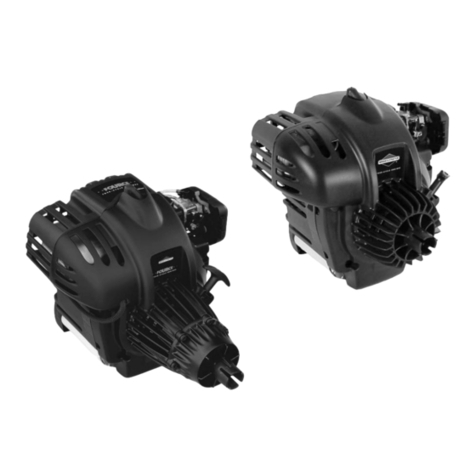
Briggs & Stratton
Briggs & Stratton 21000 Series Operating & maintenance instructions
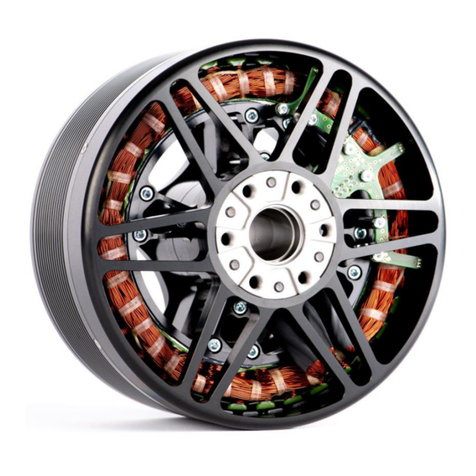
Hacker
Hacker QST-150-25 V3 operating manual
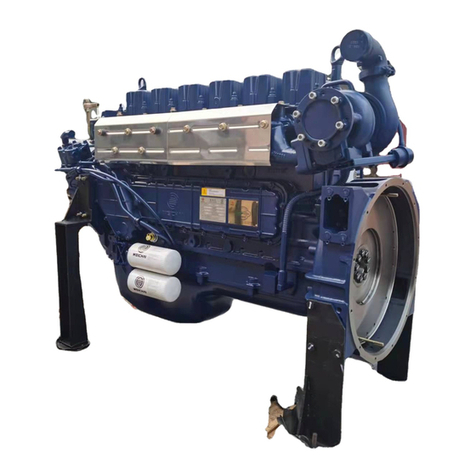
WEICHAI
WEICHAI WP10 Operation and maintenance manual
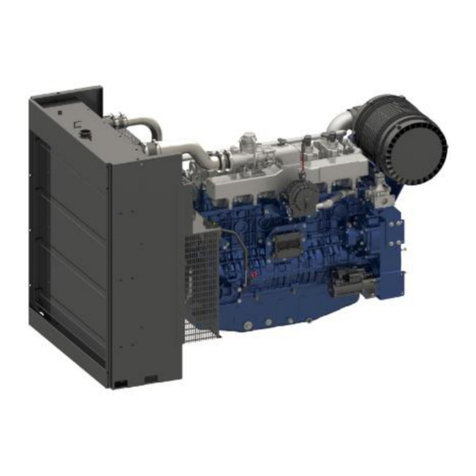
WEICHAI
WEICHAI WP13GTA Installation and application manual

Volvo Penta
Volvo Penta TAMD122A Operator's manual
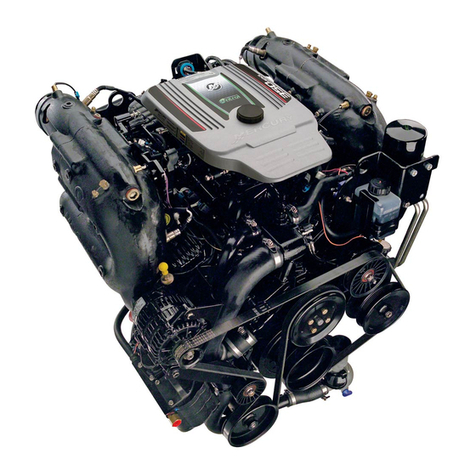
MerCruiser
MerCruiser Axius 350 MAG user manual
